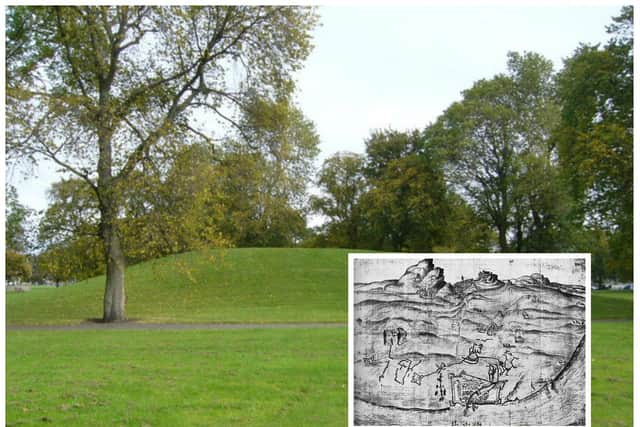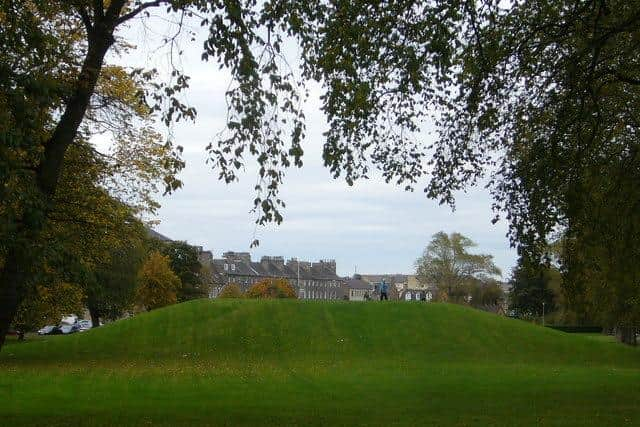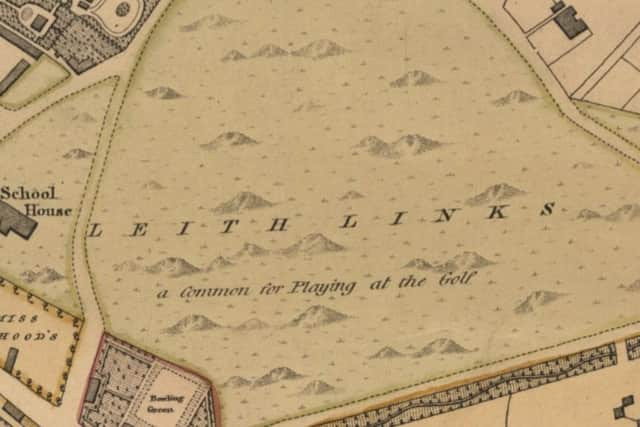The mystery surrounding the origin of Leith Links' famous twin braes
and live on Freeview channel 276
Saved from being flattened thanks to a disputed association with a 16th century siege, it appears no-one knows the true origins of Leith Links' famous twin braes.
Situated within 250 yards of one another in the tranquillity of Leith's main pleasure grounds are two conspicuous grassy hillocks that serve as a reminder of a far from peaceful episode in the old port's history.
Advertisement
Hide AdAdvertisement
Hide AdDubbed Giant's Brae and Lady Fyfe's Brae, tradition has it the twin mounds - which are listed as scheduled monuments of national importance by Historic Environment Scotland - are remains of English gun emplacements deployed in the Siege of Leith - a claim that is hotly disputed.


Siege of Leith
Concluding in the spring of 1560, the siege ended a twelve-year encampment of more than 2,000 French troops in the town.
While hundreds of lives were lost on either side during the conflict, the continental visitors eventually agreed to leave peacefully after agreeing to the terms laid out in the Treaty of Edinburgh.


The treaty effectively replaced the Auld Alliance between France and Scotland with a new Anglo-Scottish accord.
Alexander Campbell's 1827 claim
Advertisement
Hide AdAdvertisement
Hide AdMore than 250 years later, in 1827, Alexander Campbell published his History of Leith, providing detailed accounts of the great siege.
Campbell's tome stated Giant's Brae and Lady Fyfe's Brae were remains of gun batteries from the siege, a claim that was repeated frequently in the decades that followed.


It is thought Campbell's confusion may have partly arisen from a misinterpretation of a contemporary map, the Pelham Map, which shows a birds-eye view of the siege works.
Stuart Harris’ dispute
In 1996 author Stuart Harris disputed the association between the two mounds and the siege in his comprehensive The Place Names of Edinburgh, branding Campbell's assertion "wholly spurious" and going on to state that contemporary accounts and plans of the siege works fully disproved the notion.
Advertisement
Hide AdAdvertisement
Hide AdHarris added the 1827 claim had resulted in the braes being confused with the true gun emplacements, Mount Pelham and Mount Somerset. Named after captains in the English Army, the two "mounts" were actually located in Restalrig and Pilrig respectively.
Saving the braes
Perhaps most interestingly, Campbell's supposed false history led to Giant's Brae and Lady Fyfe's Brae being saved in the latter part of the 19th century.
Prior to becoming a public park, Leith Links was made up of grassy hillocks and sand dunes, with the area becoming home to one of Scotland's earliest golf courses - hence the links name.
Maps from the early 19th century show that the Links boasted numerous hillocks in addition to the more famous twin braes.
Advertisement
Hide AdAdvertisement
Hide AdIt is believed Giant's Brae and Lady Fyfe's Brae were spared on account of their alleged Siege heritage when the remainder of Leith Links' hillocks were flattened in the 1880s.
Describing their origin as "a mystery", John Lawson, the City of Edinburgh Council's archaeologist, said that, while evidence suggests the two mounds were not used as artillery mounts during the Siege of Leith, they remain important cultural reminders of the 1560 event.
Mr Lawson told the Evening News: "They're probably man-made, going just by the form of them. What they could be is up to anybody's guess; anything from rabbit warrens, to prehistoric graves to siege works.
"They are a bit of a mystery to be perfectly honest, but they are archaeological monuments in their own right and they are nationally important in terms of protection
Advertisement
Hide AdAdvertisement
Hide Ad"The mounds have played a part in the siege works but what that role was we don't know. They're almost now commemorating the siege works more than anything else.
"It's always good to have a mystery to investigate at a future date."
A message from the Editor:
Thank you for reading this story on our website. While I have your attention, I also have an important request to make of you.With the coronavirus lockdown having a major impact on many of our advertisers - and consequently the revenue we receive - we are more reliant than ever on you taking out a digital subscription.Subscribe to scotsman.com and enjoy unlimited access to Scottish news and information online and on our app. With a digital subscription, you can read more than 5 articles, see fewer ads, enjoy faster load times, and get access to exclusive newsletters and content. Visit https://www.scotsman.com/subscriptions now to sign up.
Our journalism costs money and we rely on advertising, print and digital revenues to help to support them. By supporting us, we are able to support you in providing trusted, fact-checked content for this website.
Joy Yates
Editorial Director
Comment Guidelines
National World encourages reader discussion on our stories. User feedback, insights and back-and-forth exchanges add a rich layer of context to reporting. Please review our Community Guidelines before commenting.